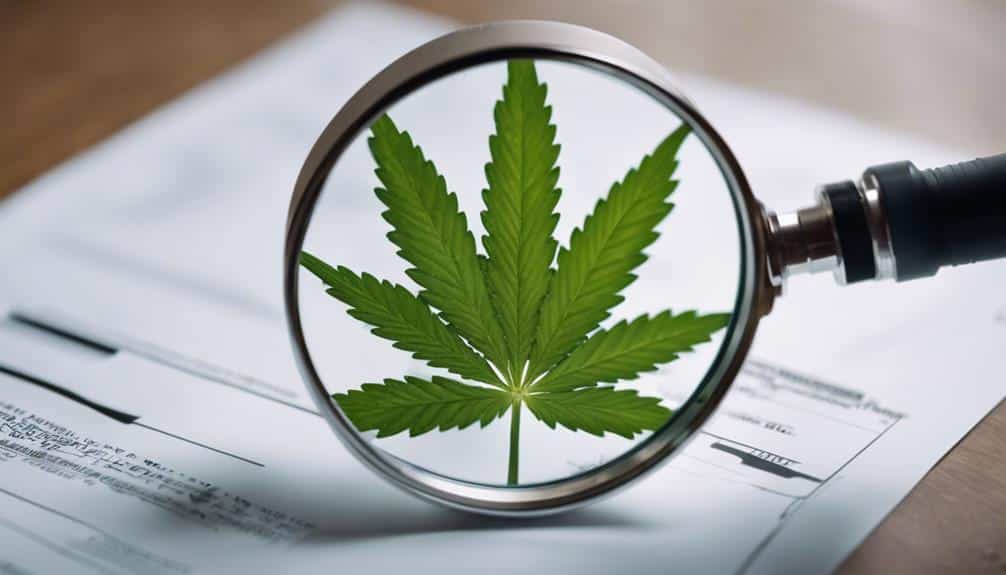Exploring the world of medical marijuana can feel like navigating a dense forest. It’s complex and daunting, filled with questions: What are its potential health benefits? What risks and side effects should you be aware of? How can you use it safely? And how do you navigate the legal maze surrounding its use?
Table of Contents
But don’t worry, you’re not alone on this journey. We’re here to guide you through this intricate terrain, shedding light on the answers you’re seeking. Just imagine what insights you might uncover…
Understanding Medical Marijuana

To fully grasp the potential benefits and drawbacks, it’s crucial to understand medical marijuana’s composition, its historical use, and the current scientific research surrounding it. Comprising over 100 cannabinoids, medical marijuana is primarily derived from two Cannabis strains: Cannabis indica and Cannabis sativa. Each strain offers a unique combination of therapeutic effects, making it critical for understanding their properties to serve patients effectively.
Historically, marijuana has been used for centuries in various cultures for therapeutic purposes. Despite controversies and legal constraints, its medicinal properties are gaining recognition in modern medicine. Current research is striving to demystify the plant’s pharmacological potential and identify patient eligibility criteria for medical marijuana use.
Patient eligibility for medical marijuana is generally determined by specific conditions or symptoms or disease severity; these vary widely across different jurisdictions. In most cases, conditions like chronic pain, epilepsy, multiple sclerosis, and nausea from chemotherapy qualify for medical marijuana treatment. However, it’s essential to note that research is ongoing, and the list of eligible conditions is continually evolving. By staying updated on these criteria, you can ensure appropriate and evidence-based recommendations for your patients.
Potential Health Benefits
While you’re likely aware of marijuana’s reputation for inducing a ‘high,’ it’s also important to note the growing body of evidence supporting its potential therapeutic benefits. Cannabinoid research is increasingly shedding light on the mechanisms through which marijuana can play a significant role in managing a variety of health conditions.
Marijuana, specifically its cannabinoids, has been found to have therapeutic applications in managing chronic pain. This is particularly beneficial for patients who don’t respond well to traditional pain management strategies. The cannabinoids interact with receptors in the nervous system, altering pain perception and providing relief.
Furthermore, marijuana’s anti-emetic properties have shown promise in managing nausea and vomiting, especially in cancer patients undergoing chemotherapy. It can also stimulate appetite—crucial for those struggling with weight loss due to illness.
Moreover, preliminary studies suggest marijuana might have potential in managing certain mental health conditions like anxiety and PTSD; however more research is needed to substantiate these claims.
Risks and Side Effects

Despite the potential health benefits, it’s crucial to consider the risks and side effects that come with using medical marijuana. One of the most significant concerns revolves around the potential for addiction. Although it’s less addictive than some substances, you can still develop a dependence on medical marijuana. This addiction can lead to withdrawal symptoms when you stop using it. These symptoms may include irritability, mood changes, insomnia, and physical discomfort.
Multiple studies have confirmed these risks. For instance, a 2012 study in Drug and Alcohol Dependence found that about 9% of people who use marijuana will become addicted. The numbers rise to about 17% if you start using in your teens, and 25-50% among those who use it daily.
Furthermore, medical marijuana can have other side effects like dizziness, dry mouth, nausea, and altered mental states. In rare cases, it could even exacerbate mental health conditions such as psychosis. It’s also important to note that its long-term effects on health aren’t fully understood yet.
Guidelines for Safe Usage
Given these potential risks and side effects, it’s clear that guidelines need to be followed for safe usage of medical marijuana. Dosage determination is crucial—start with a low dosage and gradually increase it while monitoring your body’s response is key to finding what works best for you. Don’t rush the process—it’s better to take it slow and avoid potential harm than rush into severe side effects.
Strain selection is another significant factor—different strains contain varying levels of cannabinoids and terpenes which influence their effects. Do your research or consult your physician to choose a strain suitable for your condition but remember everyone’s body reacts differently to each strain so monitoring your body’s response is essential.
Furthermore, avoid mixing marijuana with alcohol or other drugs as this can increase the risk of adverse effects. Always use in a safe and comfortable environment—and never operate heavy machinery or drive while under the influence of marijuana.
Abiding by these guidelines can ensure you’re using medical marijuana safely and effectively. Remember, it’s not about achieving a high, but finding relief from your symptoms.
Navigating Legal Issues

Navigating the legal landscape of medical marijuana can be a complex endeavor as each state has its own set of laws and regulations. Understanding these legislative complexities is crucial to ensure compliance and protect your rights as a patient or healthcare provider.
Here are three key steps to help you navigate this challenging terrain:
- Research Your State Laws: Each state has specific rules on medical marijuana use—some allow it for certain conditions while others may have stricter limitations or prohibitions. Stay informed about these laws to avoid legal complications.
- Understand Prescription Protocols: Doctors must follow specific protocols when prescribing medical marijuana—these may vary by state and can include requirements like mandatory patient registries or limitations on the types of conditions that can be treated.
- Consult Legal Professionals: If you’re uncertain about any aspect, consult a legal professional well-versed in medical marijuana law—they can provide guidance ensuring that you’re operating within the legal framework.
Conclusion
In sum, for some people, the potential benefits of medical marijuana may outweigh the risks. However, it’s not a panacea from the past. Navigate this modern tool wisely, considering possible side effects and legal hurdles. Always consult your physician and remember—Rome wasn’t built in a day. The journey to health often takes time and patience. Use medical marijuana responsibly, and it could be an effective ally in your healthcare strategy.
If you’re intrigued by the potential of medical marijuana and would like to dive deeper into understanding how it could fit into your healthcare plan, why not visit us at Cannabis Docs of Delaware? Our team is always here, ready to navigate you through the process, provide more personalized advice, and answer any questions you might have. Give us a call—we’re looking forward to meeting you.

